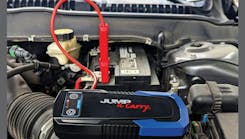Diagnosing hybrid and electric vehicles
When it comes to performing diagnosis on any vehicle, we as technicians have developed strategies - through our experience, through tips we picked up at training events, and/or through suggestions from fellow technicians or mentors.
We have accumulated thousands of dollars of diagnostic equipment, some of which we use more often than others and some that have been in our toolboxes for years and very rarely used anymore. The good news is that most of the diagnostic tools and equipment we have can be used for diagnostics on hybrid and electrified vehicles.
When it comes to performing diagnosis on hybrid and electrified vehicles, we can approach it as we do on most vehicles. I always start with a complete system module scan, road test to record any data that may be related to the concern, thorough information search, and then structure my diagnostic test plan and approach.
Here is where there will be some difference. First, you may need to try multiple scan tools to view the data you are looking for. I use multiple, the Snap-on Zeus and the new Autel MS909 EV are my first choices, but there are times I need to use OE factory-level scan tools. I have yearly subscriptions for the Ford IDS, Toyota TIS, Chrysler WiTech, and GM Global connect, along with scan data I can review all the information at the dealer level that I may need, plus it gives me access to software updates/J-2534 programming. You’ll find these programs provide frequent updates.
Now that we have our data collected, the next thing would be to research. If it’s a code I am not familiar with I first look at code setting criteria. This gives me a good direction of where to start. Then an extensive TSB search, even if it’s not specific to the concern or code. Then I will check some of the typical technical support websites. You will find that some might not give you much information, but some of the more common hybrids and EVs will have common/pattern failures that you will find. Sometimes, I will spend up to an hour just researching before I even touch the vehicle. If you do not understand how the system works, you may be spending time testing components that are not even related.
This is where training plays a key factor in diagnostics. If you do not understand or know how a system works, or what a component is for, your frustration will get the best of you. We exclusively use the EVPro+ program, due to their years of experience in the field and platforms available.
Most diagnoses can be performed without the vehicle being in “safe” mode, but follow all safety protocols outlined in the service information. If you are not sure, research it!
When you first start performing hybrid and EV diagnosis it can be a little intimidating, but once you start doing a few you will soon come to realize that they are not much different than all the other vehicles we have been repairing. However, if you are turning them away, you will never get the chance to adapt or die, that has been true in our industry forever. It's time to adapt and start making money in the hybrid and EV market.



